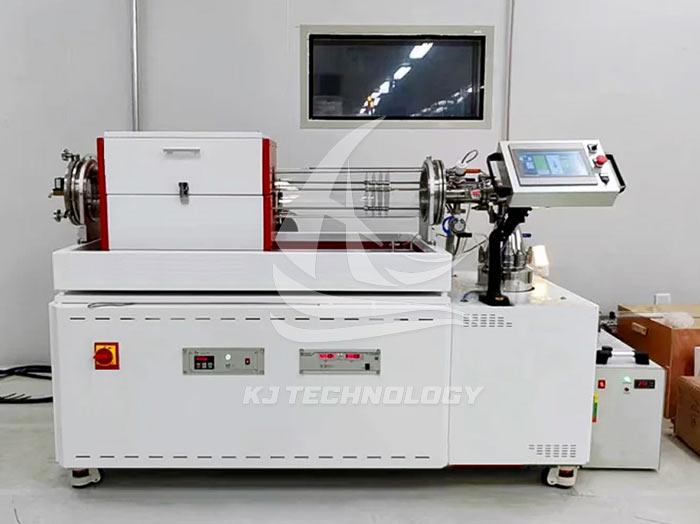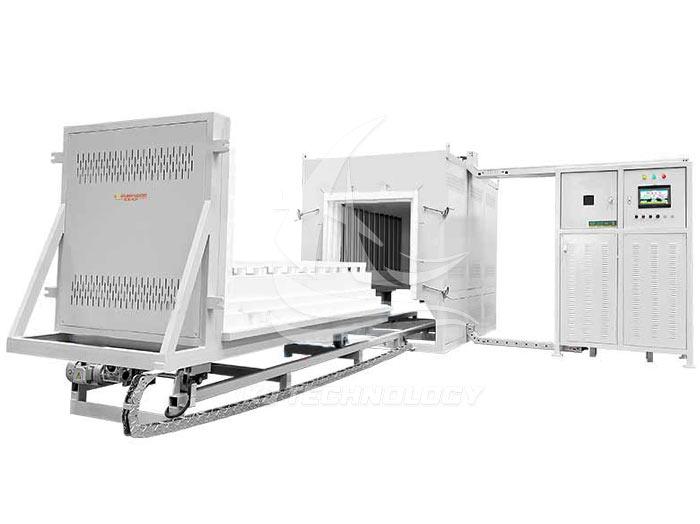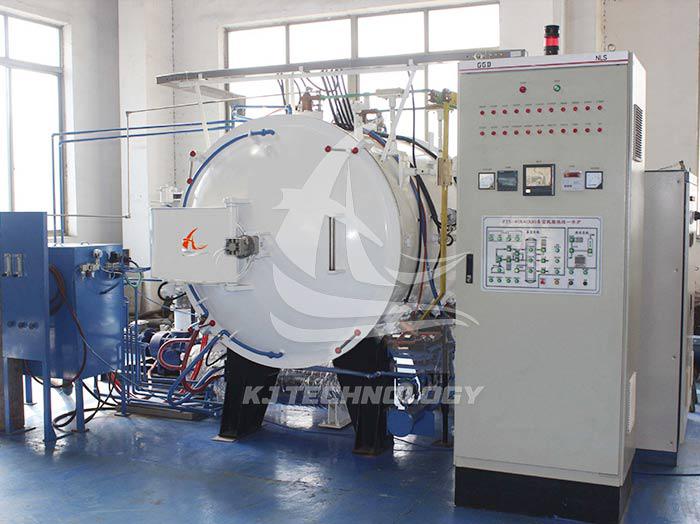Customized heat treatment vacuum furnace
 06-16-2025 Author: KJ technology
06-16-2025 Author: KJ technology
When customizing a heat treatment vacuum furnace, one can start by clarifying process requirements, paying attention to key technical indicators, examining equipment design and structure, and considering brand and service. The following is a specific introduction:
Clarify process requirements
Determine the material to be processed: Identify the type of metal material that needs to be processed, such as stainless steel, titanium alloy, high-temperature alloy, etc. Different materials have different requirements for temperature range, heating rate, cooling method, etc. during vacuum heat treatment. For example, the heat treatment temperature of titanium alloys is generally between 800-1000 ℃, and there is a high requirement for uniformity in the heating and cooling processes.
Clarify the processing technology: Determine the specific heat treatment process, such as vacuum annealing, vacuum quenching, vacuum sintering, etc. Different processes also have different performance requirements for vacuum furnaces. For example, vacuum quenching requires a vacuum furnace to have the ability to quickly cool, usually requiring an efficient cooling system.
Determine production scale: Determine the size and capacity of the vacuum furnace according to the production plan to meet production needs. If it is a large-scale production, it may be necessary to choose a larger size vacuum furnace to improve production efficiency.
Focus on key technical indicators
Temperature range and uniformity: The temperature range of the vacuum furnace is determined according to the process requirements. Generally, the temperature range of the heat treatment vacuum furnace ranges from several hundred degrees Celsius to over two thousand degrees Celsius. At the same time, attention should be paid to the uniformity of temperature inside the furnace, usually requiring a temperature deviation of no more than ± 5 ℃ or less within a certain size range to ensure the consistency of heat treatment quality.
Vacuum degree: Vacuum degree is one of the important indicators of a vacuum furnace, and different heat treatment processes have different requirements for vacuum degree. For example, some processes that require high surface quality, such as vacuum brazing, may require higher vacuum levels, generally requiring a pressure of 10 ⁻³ -10 ⁻⁴ Pa or even higher.
Heating and cooling rates: Determine the heating and cooling rates of the vacuum furnace according to the process requirements. Rapid heating rate can improve production efficiency, but it may cause thermal stress on the material; A reasonable cooling rate helps to ensure the performance of the material. For example, the heat treatment of certain alloy materials requires controlling the cooling rate to avoid cracking or uneven microstructure.
Examine equipment design and structure
Furnace structure: There are two common types of furnace structures: vertical and horizontal. Vertical vacuum furnaces have a small footprint and are suitable for places with limited space; Horizontal vacuum furnaces are convenient for loading and unloading large workpieces. In addition, attention should be paid to the sealing performance of the furnace body, as good sealing performance is the key to ensuring vacuum degree.
Heating element: The selection of heating element directly affects heating efficiency and temperature uniformity. Common heating elements include resistance wires, graphite heaters, induction heating coils, etc. For example, graphite heaters have advantages such as good high-temperature performance and fast heating speed, but their prices are relatively high.
Cooling system: For processes that require rapid cooling, such as vacuum quenching, the performance of the cooling system is crucial. Common cooling methods include air cooling, oil cooling, etc. The structure of the air-cooled system is simple, but the cooling rate is relatively slow; The oil cooling system has a fast cooling speed, but attention should be paid to oil contamination and fire prevention issues.
Consider brand and service
Brand reputation: Choosing a manufacturer with a good brand reputation can help you understand the manufacturer's reputation and market share by consulting industry information and peers. Famous brands usually have more assurance in product quality, technological research and development, and after-sales service.
After sales service: Understand the manufacturer's after-sales service content, including equipment installation and commissioning, training, maintenance, etc. Good after-sales service can promptly solve problems that arise during equipment use, reduce downtime, and improve production efficiency.








